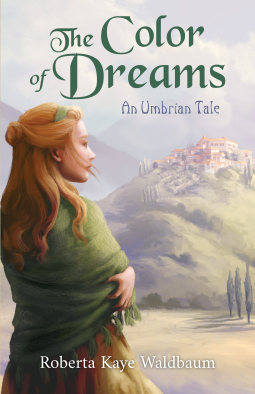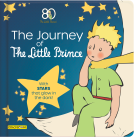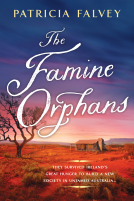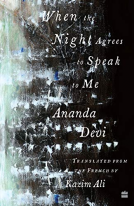
The Color of Dreams
An Umbrian Tale
by Roberta Kaye Waldbaum
This title was previously available on NetGalley and is now archived.
Send NetGalley books directly to your Kindle or Kindle app
1
To read on a Kindle or Kindle app, please add kindle@netgalley.com as an approved email address to receive files in your Amazon account. Click here for step-by-step instructions.
2
Also find your Kindle email address within your Amazon account, and enter it here.
Pub Date Oct 01 2024 | Archive Date Oct 31 2024
Amplify Publishing | Mascot Books
Talking about this book? Use #TheColorofDreams #NetGalley. More hashtag tips!
Description
n 19th-century Europe, Claire Brophy is born into a lower middle-class family where the traditional life as a dutiful wife and mother is prescribed. But Claire’s rare intellectual and aesthetic sensibilities, combined with an unexpected change in her family’s fortune, allow her to rise well beyond her station. Claire marries and settles down to a life of presumed normalcy. Yet, all is not well, and she begins a downward spiral into a state of deep depression, verging on madness.
Written as a series of diary entries set under stunning splashes of the ever-changing colors of the clouds, Claire begins to reminisce and dream in color as the stories of her youth, marriage, infidelity, and travels are painted through a series of intricate flashbacks and flashforwards.
The reader travels with Claire on a physical and mental journey southward and downward that probes deeply into her deep-seated desires and troubled psyche. Observing each and every shape and color of her natural surroundings, she takes the reader along with her on a spiritual, sensual, and magical quest.
Available Editions
| EDITION | Paperback |
| ISBN | 9781637557174 |
| PRICE | $18.00 (USD) |
| PAGES | 144 |
Links
Available on NetGalley
Featured Reviews
Roberta Kaye Waldbaum's debut novel.
The book is told through the diary entries of the main character Claire. It takes you through the highs and lows of her life. Clarie struggles with unhappiness from feeling like she leads an unfulfilled life. Her happiness leads to severe depression. The author does a fine job of making the reader feel exactly how Claire is feeling.
Thank you to NetGalley, RK Waldbaum and Mascot Books for the arc version of this book in exchange for my honest review.
 Siobhan M, Reviewer
Siobhan M, Reviewer
The Color of Dreams, An Umbrian Tale by Roberta Kaye Waldbaum
Set in the end of the 19th century we follow FMC Claire's journey to Umbria through 3rd person diary entries, memories and inner monologues. Consideration of existential questions with embellished and ornate intricate details of her surroundings. To the outside world she starts off serene, intelligent and well adapted. Inside she struggles with contradicting halves; vulnarable & passionate, good & evil, peace & depression that fuel the tale.
Time purely exists, in the way a piece of classical piano sometimes seems to float alongside time in this love letter to Umbria. As someone who struggles with mental health issues, there were several instances of me feeling connection with Claire and the longing for time to lapse and stand still simultaneously.
Claire's attention to detail is amplified by Waldbaum's dignified, rich and lush pretty prose. Though it took me a few chapters to adapt from the Epic Fantasy style I most recently have been reading, I enjoyed the simplicity and slow-burn of this tale. I wish it was longer and that Claire's relationships were explored further, however it is perfect for a quick and cosy evening read.
Publisher: Mascot Books
Release Date: 1st Oct 2024
Genre: Historical Fantasy
Waldbaum's debut, e-ARC, Short story
Thankyou Roberta Kaye Waldbaum, Mascot books and Netgalley for providing me with this e-ARC for the perfect price of an honest review.
After longing, escapism is perhaps this novel’s favourite subject. Whether handled with Claire’s romantic idealism and restless longing for freedom or her husband's stoic withdrawal, the theme permeates their lives in contrasting yet deeply interconnected ways. Claire seeks to escape the stifling confines of her prescribed role through dreams, affairs, and travels, constantly chasing the elusive idea of a more fulfilling existence. Her husband, on the other hand, represents a different form of escapism—one grounded in emotional detachment and a retreat into the safety of societal expectations, allowing him to avoid confronting his own potential dissatisfaction.
But what if these two seemingly opposing forces—Claire’s yearning for freedom and her husband’s passive acceptance—collapsed into each other, creating a sort of emotional vortex? That kind of internal chaos would drive anyone over the edge, and that’s exactly what happens to Claire. As she delves deeper into her search for purpose, the lines between her fantasies of escape and the heavy reality of her life blur. The very things she thought would set her free—love, art, travel—become entangled with the weight of her everyday existence, trapping her instead. This breakdown pulls her into a deep emotional crisis, where her dreams of independence and fulfillment clash with the suffocating demands of her life, pushing her to the brink of despair.
Claire is introduced as a romantic idealist, believing that “people possessed goodness, nature was giving, and her true love was out there waiting.” As her life unfolds, Waldbaum explores Claire's struggle between her idyllic dreams and the constraints of her reality. The narrative, presented through a series of diary entries, paints a vivid picture of Claire’s yearning for liberation. She expresses a profound sense of release when she muses, “I am free, I am free. I’ve been released without the crutches of my existence—home, husband, children, and possessions.” This moment of exhilaration underscores the exhilarating yet frightful nature of her escape.
Yet, the deeper Claire sinks into her isolation, the more the allure of solitude reveals itself to be a double-edged sword. When loneliness overtakes her, she seeks solace in the hills, contemplating, “When the loneliness she felt, in the midst of her family, overwhelmed her, she sought comfort in the solitude of the hill.” It is here that Waldbaum captures the essence of escapism, illustrating how Claire's retreat into solitude becomes both a refuge and a source of profound sadness.
As she navigates her mid-thirties, Claire grapples with the tension between the life prescribed to her and her yearning for a reality that exists only in her dreams. Her infidelity becomes a desperate attempt to reclaim a sense of freedom and excitement, illuminating the complexities of her emotional landscape.
Waldbaum poignantly illustrates how Claire's affair serves as both a refuge from her suffocating domestic life and a catalyst for her descent into madness. The allure of this escape is intoxicating, providing a fleeting sense of connection and excitement that starkly contrasts with her overwhelming feelings of isolation. Yet, this pursuit comes at a cost, amplifying Claire's internal struggle as she grapples with her identity and the consequences of her choices.
As she reflects on her life, Claire feels a growing sense of disconnection from the world around her, leading to a profound contemplation of her existence. “Am I abandoned, or have I chosen to abandon everything and everyone?” she wonders, revealing the depths of her emotional turmoil. Her longing for solitude often deepens her loneliness, creating a paradox where her attempts to find comfort lead her further away from genuine connection.
The narrative explores the notion of escapism as a double-edged sword. While Claire seeks solace in her romantic fantasies, these very dreams pull her into a realm where reality and delusion blur. Waldbaum’s writing captures this delicate balance, showing how Claire’s desires for love and fulfilment can both uplift and unravel her psyche. The profound sadness that accompanies her moments of elation reflects the struggles of a woman caught between her yearning for an idealised life and the harsh truths of her reality.









